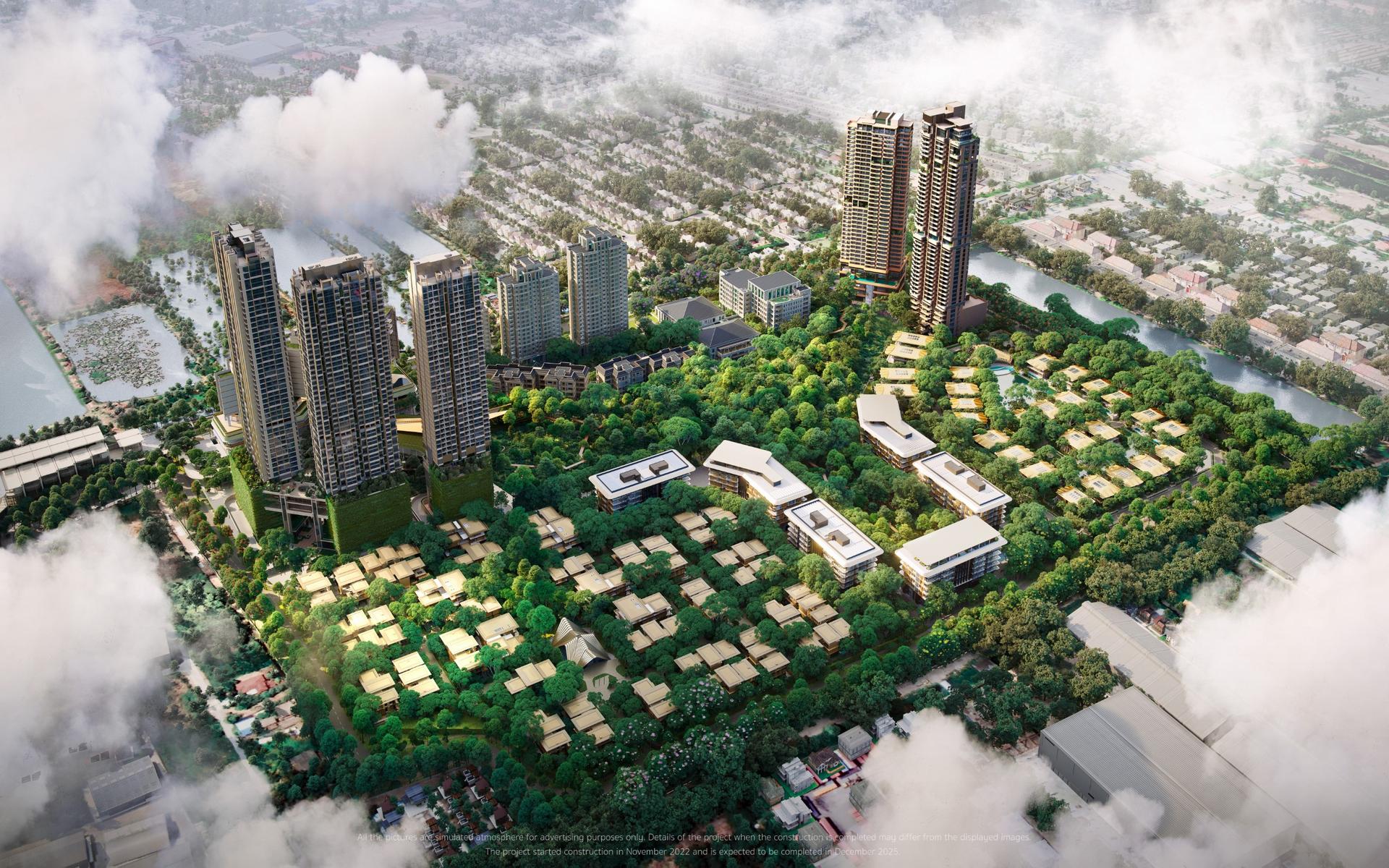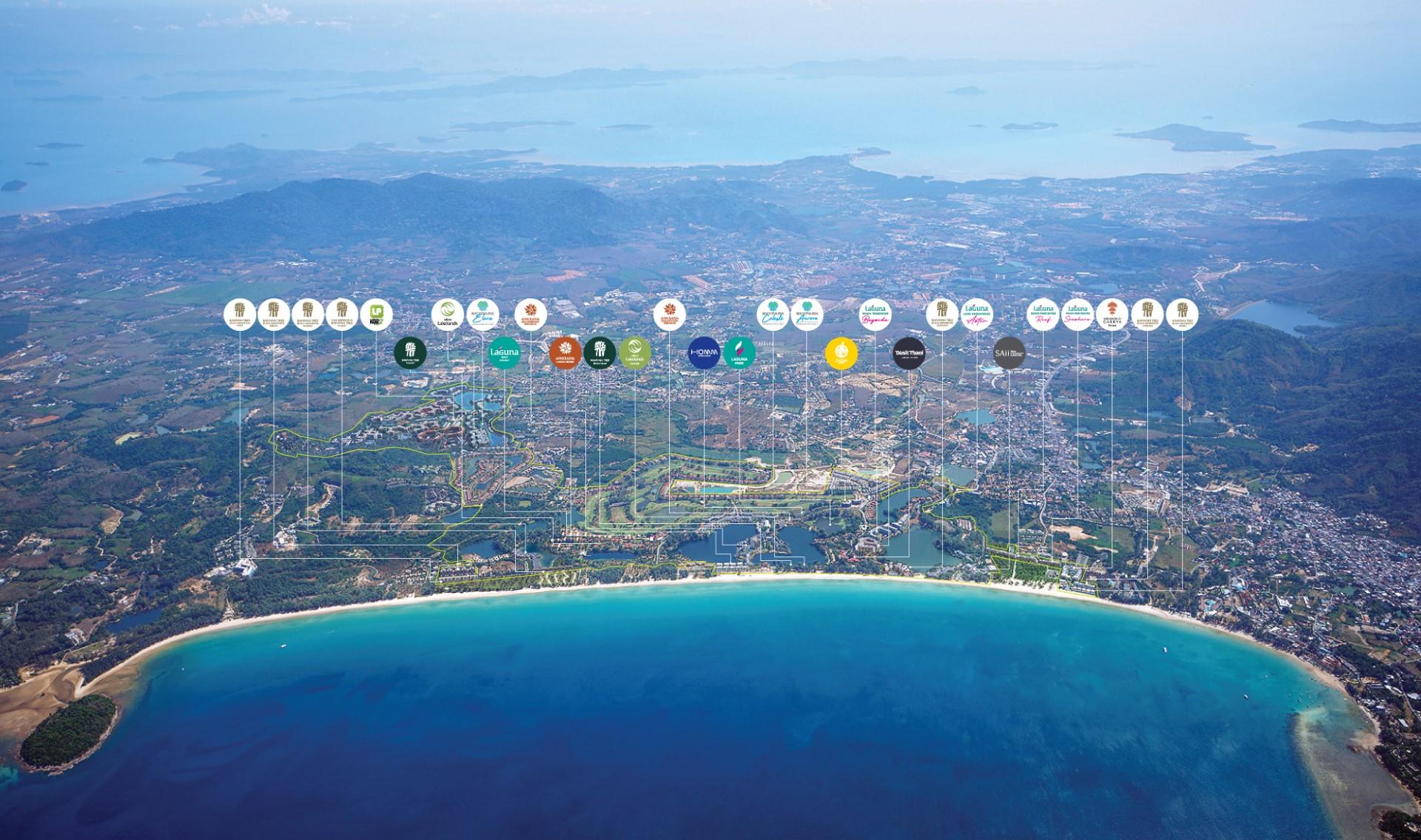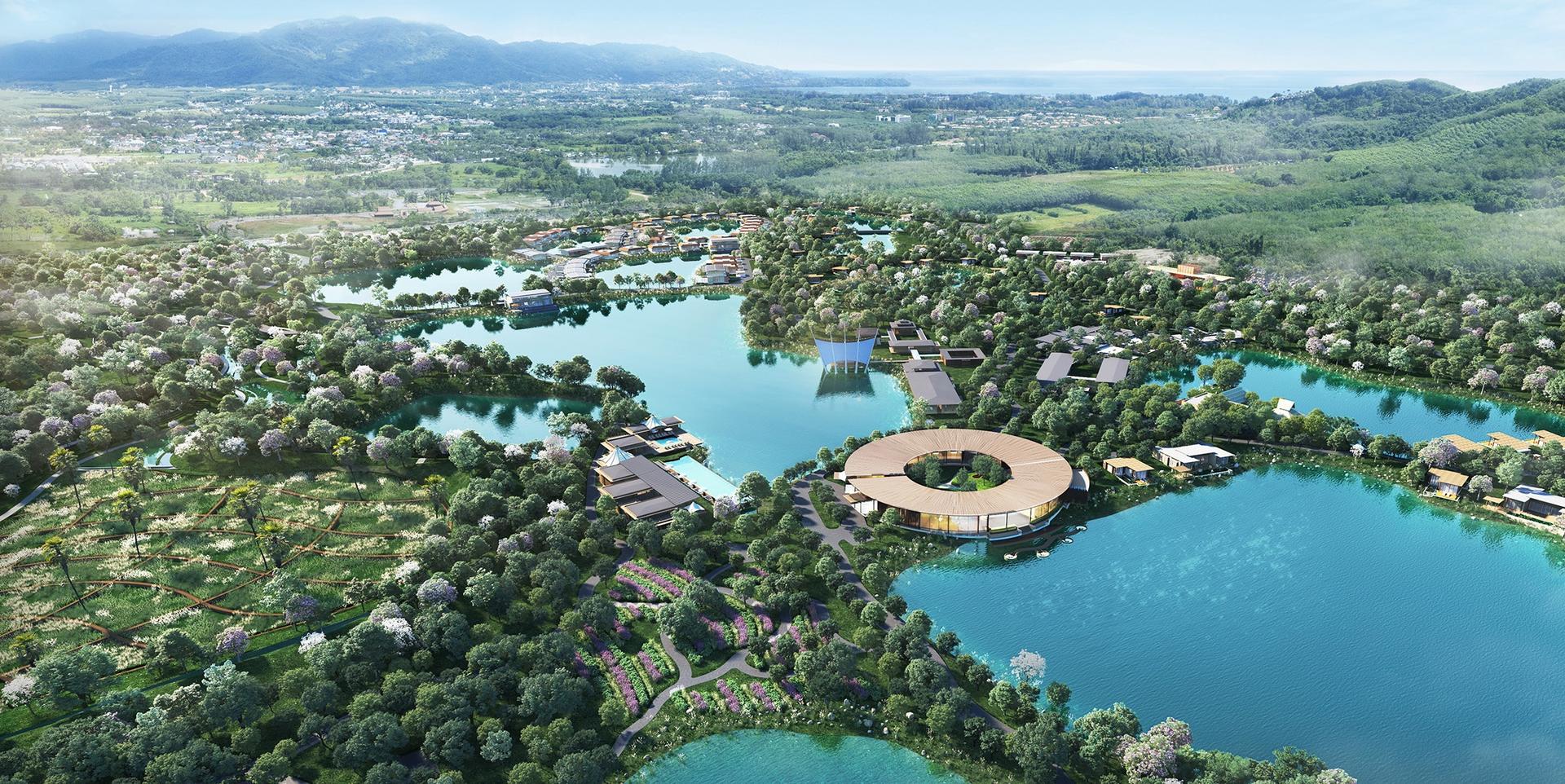Scale matters: integrated developments, mega-projects and why bigger is better
May 29, 2025
Welcome to our new series of articles about integrated developments. We will be covering some of the most interesting large-scale, master-planned, city-in-a-city projects in Thailand. After all, why develop a building when you can develop a city block?
Well, it turns out there are quite a few reasons to do either, but let’s start with more basic questions: what is an ‘integrated real estate development’ and why you should care.
Integrated real estate developments 101

We are going to hold our definitions loosely here, but in a broader sense, integrated developments are large-scale projects that combine multiple components with multiple uses, such as residential, commercial, hospitality, transport, etc, into a single compound.
They can be large enough to be neighborhood- or even city-forming, or small enough not to be noticeable to outsiders.
They can be entirely private gated communities or accessible to the public, either fully or partially. The latter normally means that some components of the project, like hospitality or retail, are open for visitors, or that the project has public access roads running through the property (while the individual condos or housing villages remain gated and open only to tenants).
Components of an integrated development can include virtually any kind of real estate, so any combination of the following: condos, houses, shops, restaurants, coffee shops, shopping malls, medical and wellness facilities, golf courses, hotels, marinas, petting zoos, parks, man-made forests, lakes, and more. Your imagination (and of course, project financing) is the limit. Most, however, will limit themselves to something fairly modest, like several residential buildings, some commercial spaces (shops, restaurants, maybe offices) and possibly a hotel.
👉 SUNWAY says:
We will take a close look at some examples in future articles, but if you’ve been to Phuket, think Laguna - the Banyan Tree Group-owned integrated resort area with 7 hotels, 30+ residential developments, a golf course, Canal Village shopping district, and much more, all maintained by Banyan Tree. This is an example of a large-scale, established integrated development
On the other hand, these can take the form of something much smaller - Sea Heaven on Phuket is orders of magnitude smaller than Laguna, but it does include several condo phases, villas, hotels, and retail - all components of an integrated development.
There tends to be some confusion and some overlap with a similar term: ‘mixed-use development’. The key difference is scale: you can have a mixed-use project in a single building: shops on the ground floor, then hotel and residences in separate floor zones - this is often aptly called ‘vertical mixed-use development’ (a good example would be the Mahanakhon building), while integrated developments comprise multiple, physically separate buildings forming their own mini-districts.
Additionally, an integrated development technically doesn’t have to be mixed-use - you could, feasibly, just build a mini-city of condos. However, this doesn’t really happen, because it doesn’t really make sense: people attract businesses, and businesses are convenient to have around for people. So, in practice, integrated developments are almost always mixed-use.
The appeal
Integrated developments have a number of advantages, both for developers and for buyers.
-
Capital appreciation. The basic approach behind most large-scale mixed-use projects is that they elevate the area, increasing real estate prices. Think about this way: every time a, let’s say, large shopping mall is built, the property prices around it go up, boosting appreciation for the owners in the area. However, with integrated developments, the ‘owners in the area’ are a part of the development as well, and their properties consistently appreciate as the project goes through development (along with typical price increases from presales to completion).
Most larger-scale projects are built - by necessity - outside of the prime city areas (although there are exceptions, like One Bangkok). The reasons are fairly obvious - the land in the city centre is too expensive, and it’s not always even possible to find a plot large enough for this kind of development. In this scenario, the key to the appeal is the balance of pricing. On the one hand, the developer buys the land on a city fringe for relatively cheap, but can sell the properties above the city fringe prices, because they are transforming it into a proper prime location. On the other hand, ‘above the city fringe’ is still cheaper than the prime areas, so it makes a lot of sense for the buyer, especially early on during presales. So you can buy relatively cheap and in several years will have something approaching CBD prices on your hands.
The above applies mostly to early stages of development, but there is sustainable growth past that as well. Projects of this type thrive on synergies - people like having all the amenities close to their home, and retail and dining spots like to be next to large numbers of people. So the interests are aligned here, and the more people move in, the better the infrastructure develops. Better infrastructure then attracts even more people, and the cycle continues.
Crucially, this doesn’t end within the development itself. Circling back to the example of Laguna Phuket above: there is a reason why the biggest shopping area in Northern Phuket, Boat Avenue, has been built literally right at Laguna’s main gate. Once a big residential development is finished, you will see shops and restaurants pop up around it as well, and then, after a year or two, new condos and houses will join the hot new neighbourhood.
👉 SUNWAY says:
An important conjecture here is that large-scale mixed-use developments boost the local economy and create opportunities for businesses.
-
The economy of scale. This allows developers to go bigger and better with the facilities and services. You won’t build a community mall for 50 tenants, but you will for 5000. A centralised service department that takes care of 10 condos and hotels is dramatically more efficient than 10 separate management companies.
An argument is sometimes made that the scale comes at the expense of privacy, however, this lacks nuance. The real culprit is density, not scale. One of the integrated developments we will be talking about, Tri Vananda, comes with just 70 villas on 236 acres of land. That’s both scale and privacy.
-
District planning. While Thailand is an exceedingly pleasant place with a lot of positive qualities, unfortunately, urban planning isn’t quite one of them. The best way to describe it would be ‘chaotic’. And, while individual condos largely have to adapt to existing streets and grids, large-scale projects can design their own.
-
Lifestyle. Mixed-use developments offer some quality of life improvement, largely coming from the facilities, commercial spaces and common areas. And it’s about your schedule as well: you don’t have to waste time driving to get your groceries, or getting to and from your gym, if it’s all right here at your doorstep.
Apart from that, since the developer normally takes care of the common roads and green spaces, the entire neighbourhood will be greener and more walkable.
-
Community. Admittedly, not an easily measurable factor, but an important one nonetheless. Common spaces - be it parks, co-working, kids playgrounds or even just a well-placed neighbourhood coffee shop, ‘third spaces’ foster social interaction, which is something modern cities often lack. Having those spaces be a part of a larger development, often available exclusively for the tenants, makes most people cross paths regularly and get to know each other.
This is especially important for families with kids, but nobody is too old to make new friends.
-
Efficiency and sustainability. Clustering residential, retail and working spaces in integrated developments doesn’t just promote efficient land use, it also reduces the need for commute. The less people need to travel by car - the less greenhouse gas emissions they produce.
Additionally, many newer large-scale developments implement energy efficient technology and sustainable materials. Since many of the energy-saving solutions only really work at scale, they have more opportunities and incentives to go for it. Once your project is big enough, the energy costs really add up, and offloading them from the tenants makes the project a bit more attractive.
-
Desirability. This is an aggregate of all of the above. All those good things make the project attractive not just to you, but to potential tenants and buyers as well. Most integrated projects are also fairly unique, limiting possible competition.
The developments
Integrated projects are definitely one of the key trends we are seeing in Thailand and worldwide. However, compared to other hot trends (let’s say branded residences), they are few and far in-between. The reasons mostly boil down to cost and time. Any large-scale development will require substantial front-loaded investment, which not every developer can afford or secure. The development time will be significantly longer too, due to size and complexity, so you need patient investors and capacity for long-term commitment. And, finally, by the very nature of this project type, there can’t be too many - the market can only absorb so much in any given area at any given time.
However, the fact that there aren’t a lot of them means that we can dedicate some special attention to each. Come back next week to read a brand new article about one of them (hint: it’s one of the mentioned above).



